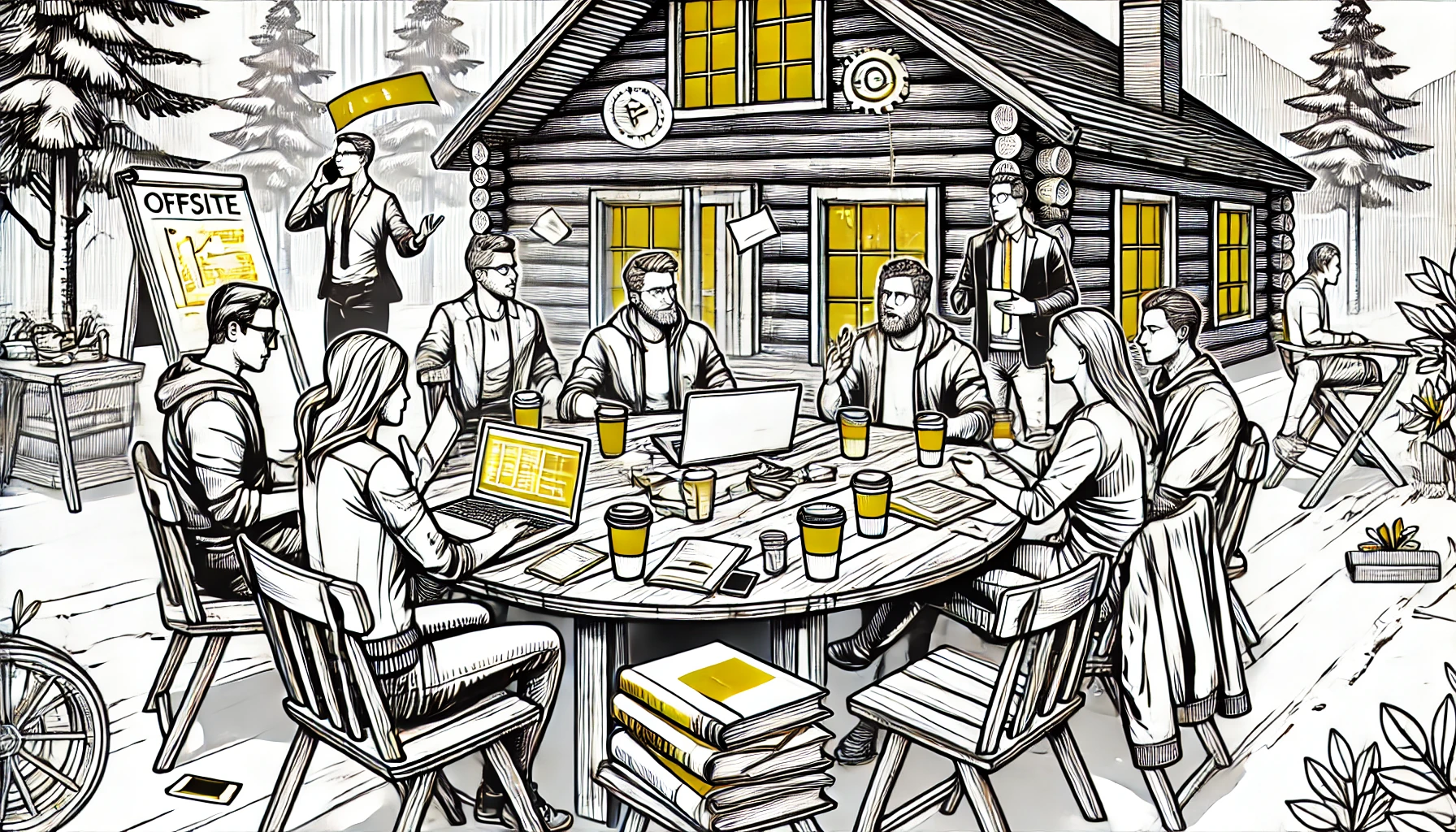Team offsites are all the rage—and for good reason. They’re a chance to get everyone out of the office (or out of their home offices) and into a fresh environment where creativity can flourish, bonds can be strengthened, and new strategies can be hatched. But before you book that dreamy mountain lodge or the swanky downtown loft, it’s essential to understand the true costs involved.
Spoiler: it’s not just about the money.
Let’s break it down—from the obvious expenses to those sneaky, hidden costs that could catch you off guard.
1. The Hard Dollar Costs: The Price Tag You See
Let’s start with the easy stuff: the costs you can actually see on the bill.
Venue Rental: This is the biggie. Whether you’re going for a chic urban space or a rustic retreat in the woods, renting a venue isn’t cheap. You’ll need to factor in the number of attendees, the duration of the event, and any extra fees for using meeting rooms, breakout spaces, or AV equipment.
Travel Expenses: If your team is spread out, you’ll likely need to budget for flights, trains, and hotels. (This is where we at Team, Assemble! excel!) Don’t forget airport transfers, parking fees, or that rental bus to haul everyone to the remote cabin.
Accommodation: A day trip is great, but if you’re planning an overnight or multi-day event, you’ll need a place for everyone to sleep. Whether it’s a hotel, an Airbnb, or a full-service resort, those beds come at a cost.
Food & Drink: Nobody works well on an empty stomach. Catering, restaurant meals, snacks, coffee breaks—these all add up fast. And if you’re planning to offer adult beverages for a little evening bonding, be prepared for that bill to climb even higher. (Team, Assemble! can help you discover and account for your team’s dietary restrictions before you leave.)
Activities & Entertainment: Team-building isn’t just about sitting around a conference table. You might want to schedule activities like cooking classes, ropes courses, or a night out on the town. Fun? Absolutely. Free? Definitely not. (Team, Assemble! can help here too… soon! It’s on the roadmap.)
2. Time & Labor Costs: The Invisible Drain on Resources
While the hard dollar costs are easy to calculate, the time and labor costs are often underestimated.
Planning & Coordination: Someone (or a group of someones) has to spend time finding the right venue, coordinating travel, choosing menus, and arranging activities. Whether this is handled in-house or outsourced to a professional event planner, it’s time-consuming. Every hour spent on offsite logistics is an hour not spent on other critical work tasks.
Prep Work: Before your team even packs their bags, there’s prep work to be done. Think pre-event meetings, preparing presentations, and ensuring everyone is on the same page. Depending on the size and scope of your offsite, this could involve hours or even days of work.
Onsite Management: During the offsite, you’ll need someone to manage the schedule, handle any last-minute changes, and keep things running smoothly. This could mean sacrificing the full participation of a key team member, as they may need to be on-call to solve problems rather than fully engage in the activities.
3. The Soft Costs: The Things You Don’t Always Consider
These are the costs that don’t necessarily show up on a balance sheet but can impact your team and your business in significant ways.
Disruption to Daily Work: Pulling your team away from their regular work means projects may be delayed, clients may wait longer for responses, and general productivity could dip. This is particularly true if your offsite spans multiple days.
Employee Stress: For some team members, offsites can be a source of stress. Traveling, being away from family, or simply the anxiety of group activities can take a toll. This is especially important to consider if you have team members who are introverted or have family commitments.
Opportunity Cost: Finally, consider what you’re not doing because you’re focusing on the offsite. What opportunities are being missed? What could the team be achieving if they weren’t spending time on this event?
So, Is It Worth It?
Given all these costs, you might be wondering if planning a team offsite is really worth it. The answer is—it depends. A well-planned offsite can yield incredible benefits: stronger relationships, innovative ideas, and a refreshed team ready to tackle challenges head-on. But it’s essential to weigh the costs against these potential benefits.
Call to Action: Ready to Plan Your Best Offsite Yet?
If you’re looking to make your next team offsite a success without breaking the bank (or your team’s spirit), sign up for Team, Assemble!. We focus on flight, travel, and hotel costs while accommodating for traveler preferences, including airlines, dietary preferences, and so much more.
Let’s make your offsite one to remember, for all the right reasons!
